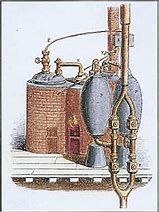Conversion Formula Horsepower
Horsepower was the original power term widely used in engineering and many other industries for about 150 years. Kilowatt is its metric Electrical equivalent now used as the standard in many industries today. Especially as electrical motors are now the dominant power unit used across the world and beyond to drive all kinds of devices! e.g., spaceships that now have traveled to the moon and on to other planets.
Say; you have Kw rating on a motor, and you wished to know the Hp rating?
Know how to do it, easy when you got the formula?
The reply might be, how can I do that…?
This was often the reply from many younger people some years ago, but not so much now…!
No, no, not apples and oranges, was an adage heard in many collage rooms and workshops around the world. We are all human at the end of the day, so why would we reply differently…?
If you did not already know the formula, many could do it in their heads. Well at least, for smaller numbers.
But not any longer should we need to ponder on the answer…?
As we all have smartphones, and we would Google it and have the correct answer in an instance.
Modern technology is great…
Horsepower to Kilowatts
Let’s take a step back and ask why do (or did) we need the Horsepower Unit, in the first place…?
Well in olden times one of the most plentiful sources of power (other than humans, wind, and water) were animals. The most easily obtained and very manageable supply of a good power source were horses. Yes, other animals were available but were not as useful and flexible as the horse.
The horse could adapt to do many kinds of work very quickly.
Around about 1650, teams of horses and ponies were starting to be used to work in coal mines, iron ore workings, quarries and to a greater extent in the early canal building projects. These were at the beginning of the dawn, of a new era, the industrial revolution. Although many people did not know that, then!
Printed In 1702, Thomas Savery wrote in his book “The Miners Friend“. Where he worked out how many horses were kept for working in a mine, to do the same amount of work that was equivalent to the work done with one of his Vacuum Steam Pumps.
By this calculation he was able to work out how much to charge mine owners, for his steam driven vacuum pumps.
There first intended use was to drain or pump out water from many Cornish tin and copper mines. This steam vacuum pump did not live up to its expected results in the large mines of the day…!
However; A few years later when Thomas Newcomen built his New Atmospheric Engine, it was a Steam driven Beam Engine. Coupled to a new type and design of water pump. He charged the new owners a percentage of the savings they gained, from the same work his engine would accomplish, against that which their horses could do.
This was along the same lines of calculations, that Thomas Savery had work out and wrote about, some years earlier!
There was one significant difference with Newcomen’s engines, they worked very well, right from the start up after installation. Mine owners were incredibly pleased with the results. Thomas Newcomen was soon in exceedingly high demand for his steam driven pumps across Britain & Europe.
This method was phenomenally successful and profitable for both the mine owners & Thomas Newcomen.
By the mid-1760’s James Watt would invent an improvement, to modify the efficiency of Newcomen’s steam engines. This modification would increase the efficiency of these old engines by 2/3rd’s. this was a massif savings. Soon Watt’s engine improvements were in remarkably high demand and were very profitable for Boulton and Watt. These two men would go on to build a factory at Soho, Birmingham, England, to make these improvement parts, and later to build their own steam engines.
Conversation Improvement
There were thousands of these Newcomen steam engines working across Europe by this time, many owners demanding the new improvements. Business was booming for the two men, Boulton & Watt, but this was a beam operating engine. Not suitable for rotating machinery like that of a windmill, or waterwheel conversation?
Boulton asked James Watt to create a rotary engine, which turned out to be an immense success. By now Watt wished to define the power of his new rotating steam engines, especially for those new customers that were not working in mines! How could he tell a mill owner, a new customer, what size of steam engine was required for a given mill?
He carried out many experiments using horses, and from this work he coined the phrase Horsepower…! Although other engineers were working along the same idea, Watts formula would become the standardise Power Unit for calculating horsepower.
In an experiment in 1782 he found that a brewery horse could lift 32,572 foot-lbs/minute. Later with his partner Matthew Boulton they standardised this number as 33,000 ft-lbs per min, as equal to 1 Horsepower.
Imperial Horsepower Formula Information
This image is shared from Wikipedia.
CC BY-SA 3.0, Link
This figure has remained in use as 1 Hp = 0.746 Kw, rounded up, the metric equivalent in widespread use. Although many other types of Hp are in use in other industries today. Brake horsepower, as an example; is used for the size of combustion engines of vehicles…!
Metric Horsepower Formula Information
Notice that there is a small difference in the watts for an Imperial Horsepower = 745.7 and for the Metric Horsepower = 735.5 watts. These numbers of watts are round up to the next whole number.
The ISO Standard recommends = 746 watts as the standard to use when calculating Kw to Hp, or Hp to Kw. So, there you have it!
Brake Horsepower
This is another type of horsepower in widespread use, mostly in engine power ratings. It is the power available at the flywheel, PTO, (power take off, on tractors) or the shaft where power is available for other work.
The Prony Brake is a simple device invented by Gaspard de Prony in 1821 to measure the torque produced by an engine. The term “brake horsepower” is one measurement of power derived from this method of measuring torque.
Power is calculated by multiplying torque by the rotational speed of a shaft or flywheel!




